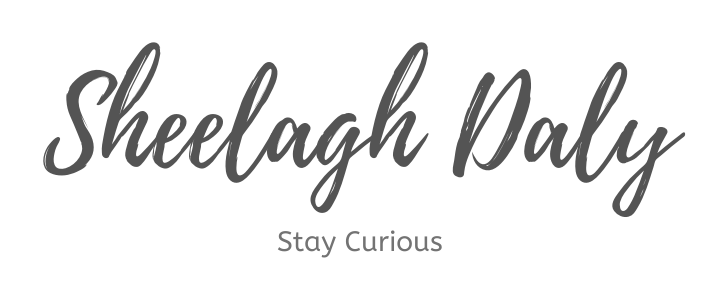
We’re getting into the holiday season and if you or someone in your family has been diagnosed with a food allergy, figuring out what you can eat can be a stressful experience.
But it doesn’t have to be! Since discovering my food allergies my family has switched over to yeast-free stuffing, dairy-free mashed potatoes and egg-free desserts and I daresay no one feels like they’re missing out. Because although it may seem hard to believe at first, I truly believe there is an equally delicious alternative to just about any traditional favourite. And I’m here to help you navigate through the confusion, find easy recipes and start creating delicious allergy-friendly meals for yourself and your family! Here you’ll find my best tips to make creating allergy-friendly favourites feel doable and fun. Hope they help you enjoy some tasty new meals and treats this holiday season!
1. Make use of allergy-awareness and eating styles
There is no doubt that food allergies are on the rise. And although being allergic to certain foods can have its challenges, allergy-awareness has made a big difference. Many bloggers, chefs and cookbook authors are creating recipes that are nut-free, gluten-free, dairy-free, and everything in between.
Something else that has really helped me to not feel deprived by my allergies is the existence of different diets and eating styles. I’m allergic to eggs so if I’m having a hankering for a cupcake or muffin or cookie, all of which traditionally use eggs, it’s just a matter of googling “vegan cupcake recipe” as vegan recipes don’t use eggs. For a milk-free alternative, searching for dairy-free or vegan recipes will have me at what I need in moments. Or for my pesky yeast allergy, googling candida-friendly recipes will get me what I need as a candida diet avoids yeast. Similarly, If you’re gluten or grain intolerant, paleo recipes are there for you.
There are eating styles that cut out legumes, nuts, seeds, nightshades, and just about anything else you can think of. A quick Google search of “diet that cuts out X” should help you track down some eating styles that will be helpful to you and from there you can hunt for the specific recipe you need that follows that eating style. Searching for “egg-free”, “gluten-free”, etc. recipes is also a great way to get started.
2. Discover your alternative ingredients
When you first start looking at allergy-friendly recipes, the ingredient list may seem overwhelming. Egg-free baked goods will require things like apple cider vinegar and ground chia seeds, nutritional yeast will pop up in savoury dairy-free dishes and all kinds of flours you didn’t know existed will be needed for gluten-free recipes. Don’t worry though because all of these ingredients can be found at your local health food store and the people there can easily help you find your way around. So don’t be afraid to ask for help from one of the knowledgeable customer service representatives! Once your pantry is stocked with the basics, throwing together a recipe you find will become so easy, and you may even find yourself experimenting with your traditional recipes and finding ways to make them allergy-friendly too.
3. Find new resources
When you have food allergies, the cookbooks you or your family used in the past might not be as helpful anymore. The average cookbook is packed with the most common allergens like wheat, dairy, nuts and eggs. But allergy-friendly resources are out there! You can try checking out your local library or book store and searching for books specific to your allergies or books catering to a compatible eating style as mentioned above. My favourite resources though are blogs. Simply Googling specific recipes like “nut-free granola bars” or “gluten-free vegan apple pie” will turn up plenty of results you can go through until you find one that looks right. Once you find one, take a peek around the rest of that blog. That particular food blogger may have similar food allergies to you and you could find a whole host of new recipes to try out. Here are a few allergy-friendly resources to get you started:
The Vegan 8 (Dairy-Free, Egg-Free, Oil-Free, mostly Gluten-Free)
Oh She Glows (Dairy-Free, Egg-Free, some Gluten-Free)
Bunners Cookbook (Dairy-Free, Egg-Free, Gluten-Free)
Minimalist Baker (Many Dairy-Free, Egg-Free and Gluten-Free options)
Healthful Pursuit (Dairy-Free, Gluten-Free, Grain-Free, mostly Nut-Free)
Oatmeal With a Fork (Many Dairy-Free, Egg-Free, Gluten-Free, Grain-Free, Nut-Free and Low-Sugar options)
4. Don’t give up
The unfortunate truth is, not every allergy-friendly recipe will be a winner. Just like every regular recipe or dining out experience may not be what you wanted it to be. But stick with it! The first time I made yeast-free pizza it tasted like I was eating pizza on a tea biscuit. But rather than giving up, I played around with different recipes until I found one that tasted phenomenal.
It must also be said that most allergy-friendly recipes will taste slightly different than the original version simply because of the changes in ingredients required. But if you let yourself stay open to it being slightly different you may find yourself liking the new recipe even MORE than the original. I swear I’ve had many gluten-free, vegan baked goods that are waaaaay better than the original varieties. They’re richer in flavour and often made with natural, whole ingredients which makes them soooo good. So stay open, keep experimenting, and you’ll soon find yourself with a collection of delicious allergy-friendly alternatives.
If you have any particular allergy-friendly recipes you’re struggling to find, please don’t hesitate to contact me. I would love to help you make your current way of eating as fun and delicious as possible!
More allergy-friendly recipes:
5 Yeast-Free Recipes
Gluten-Free Vegan Date Squares
Nut-Free, Gluten-Free Vegan Coconut Cacao Cups
